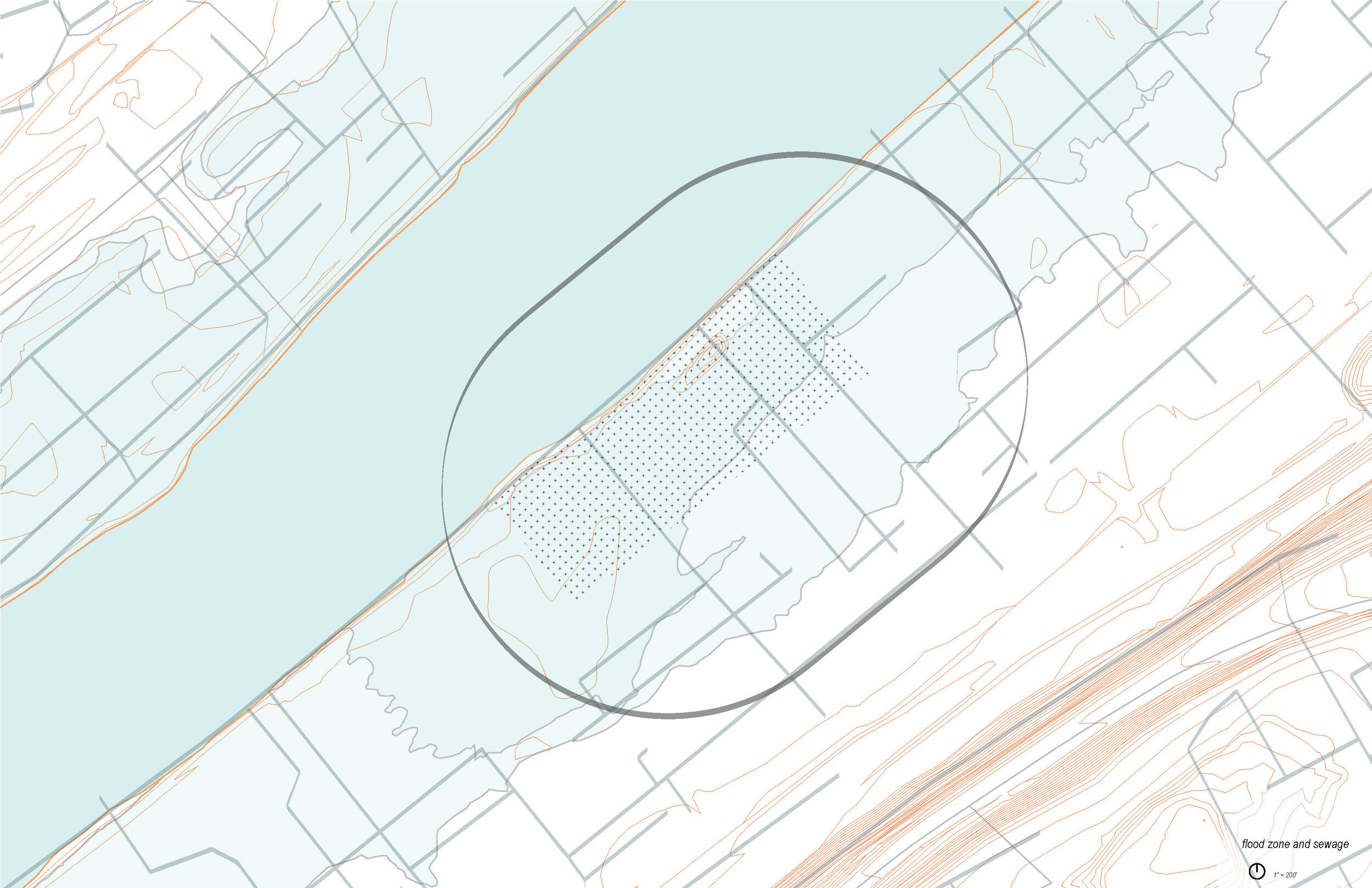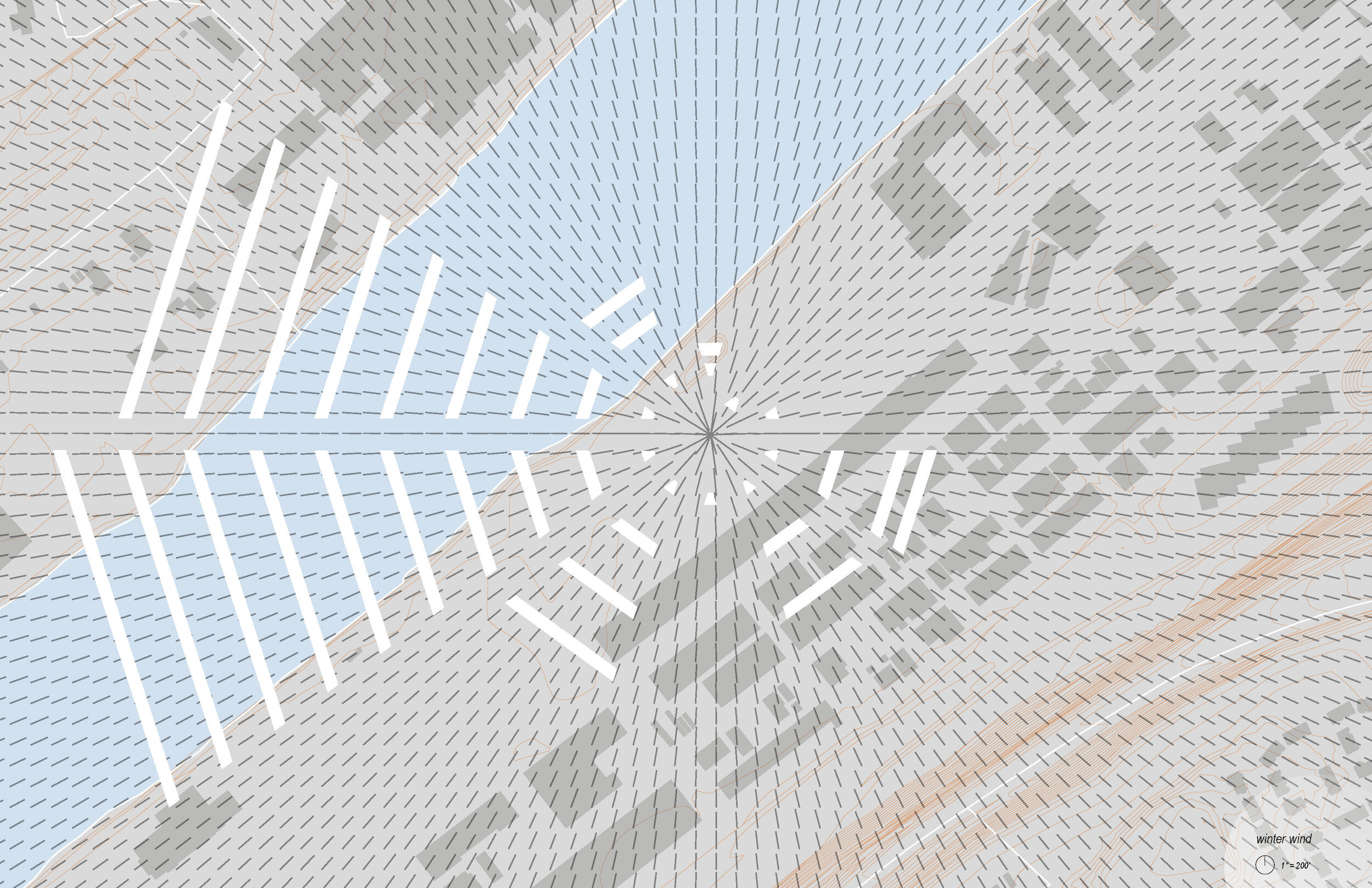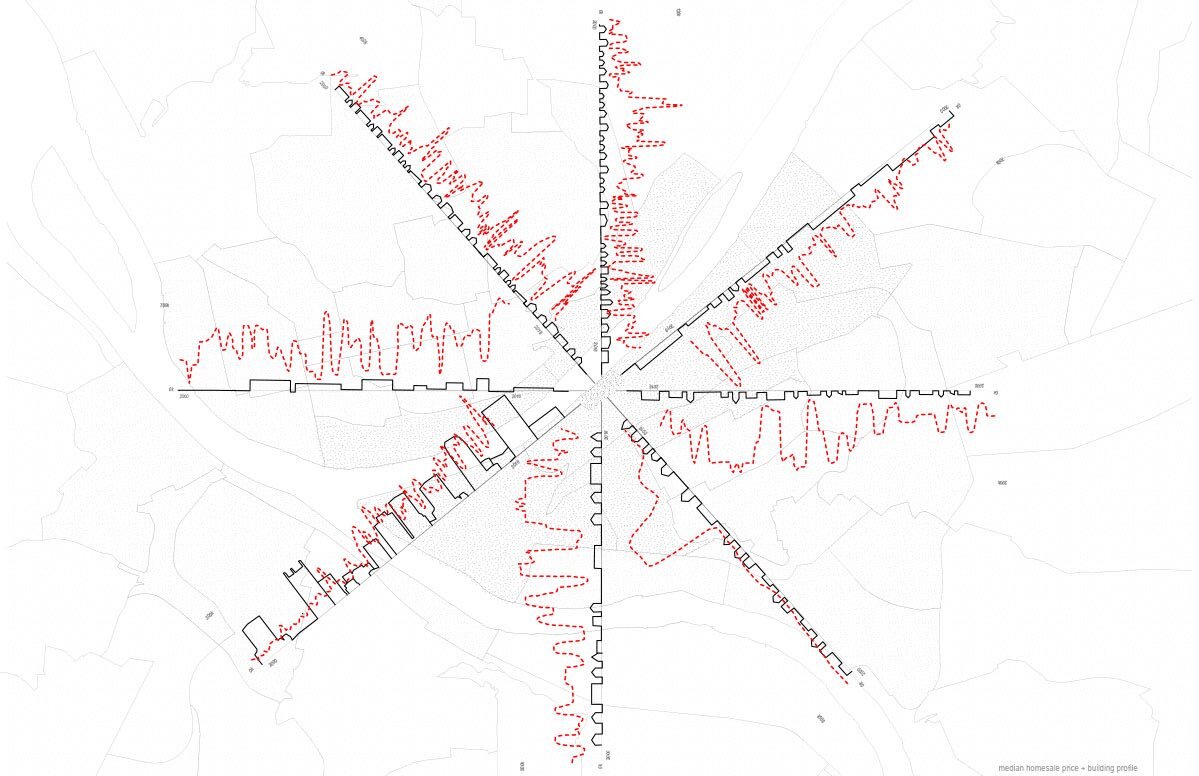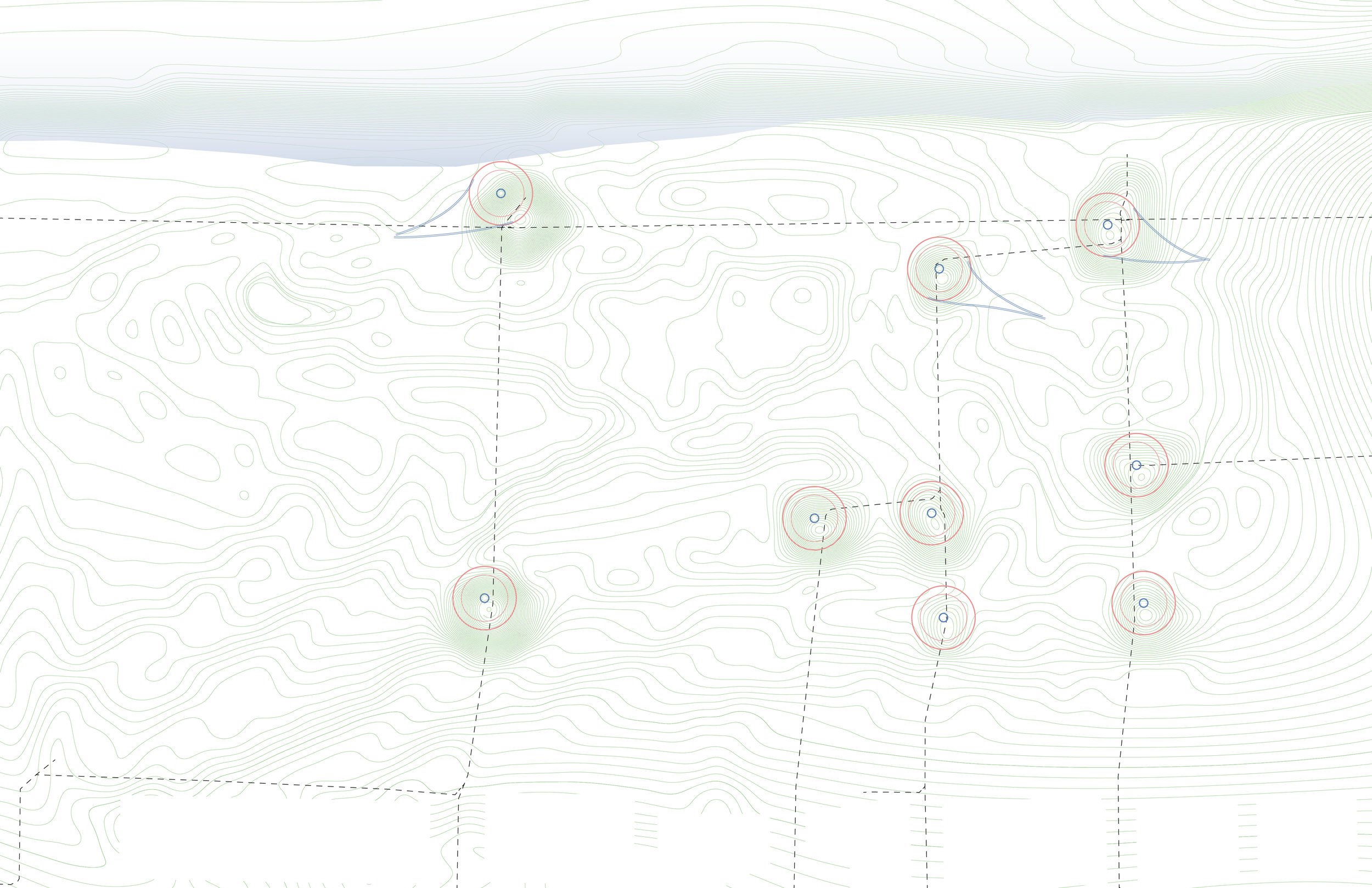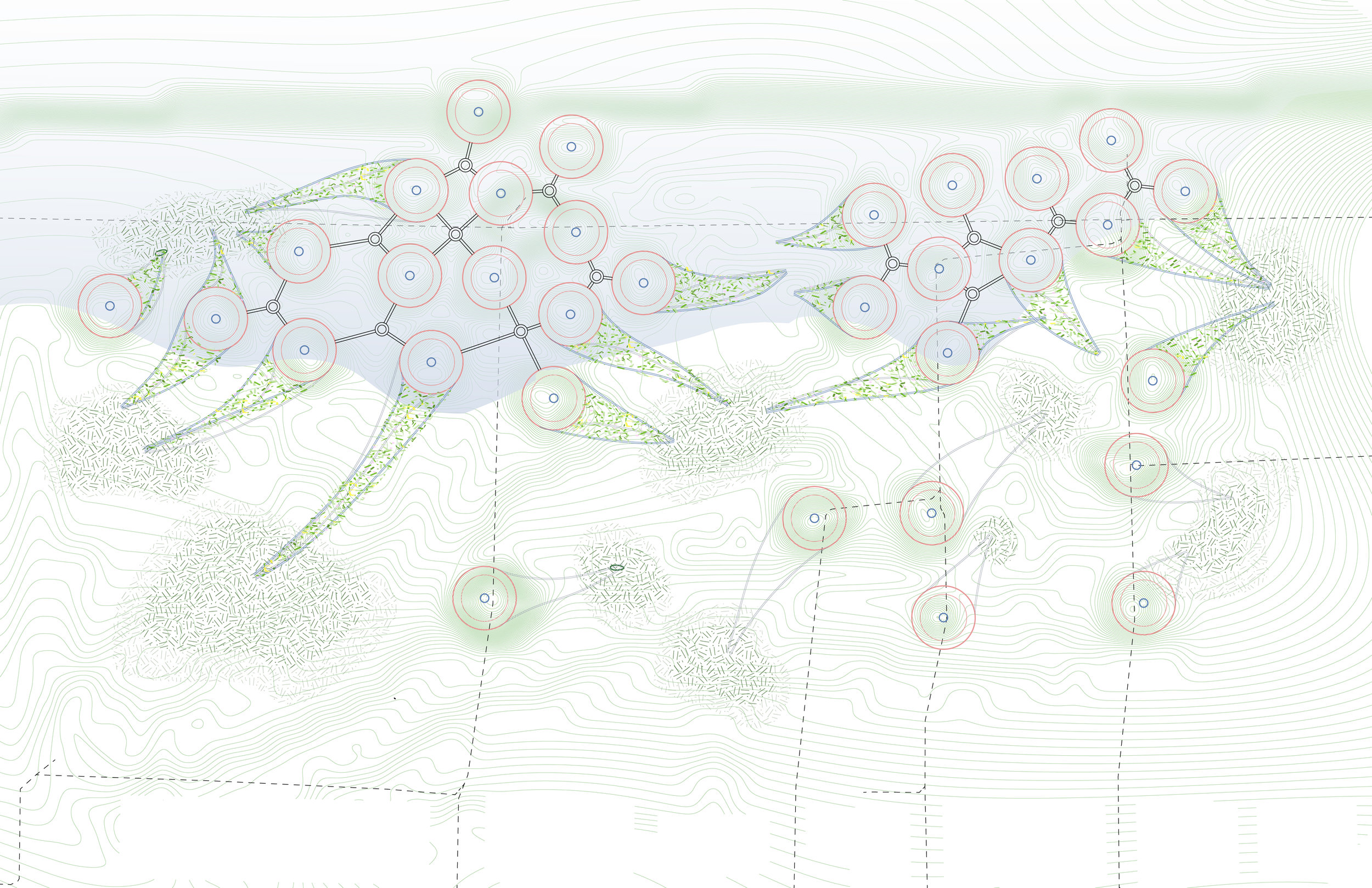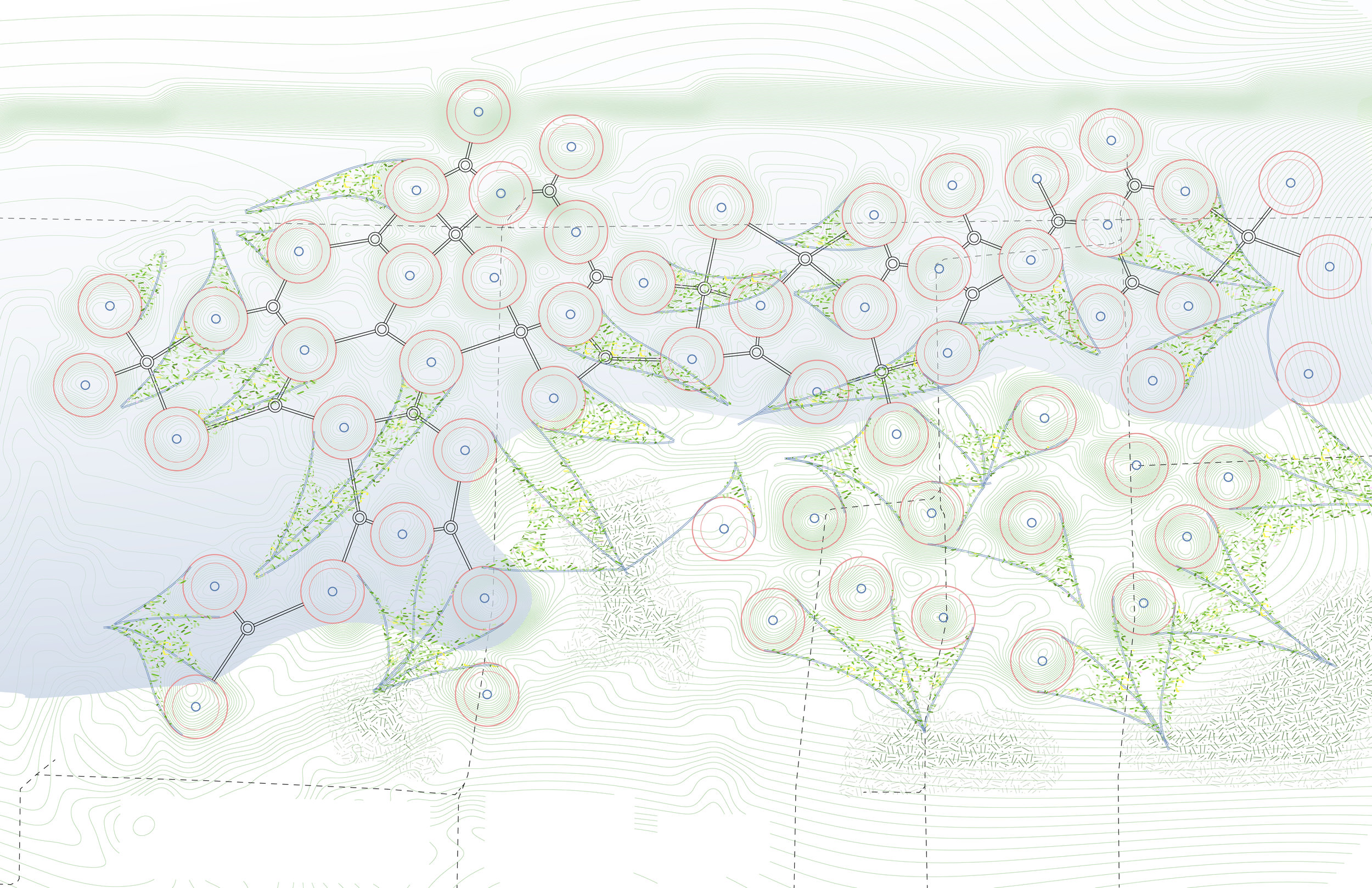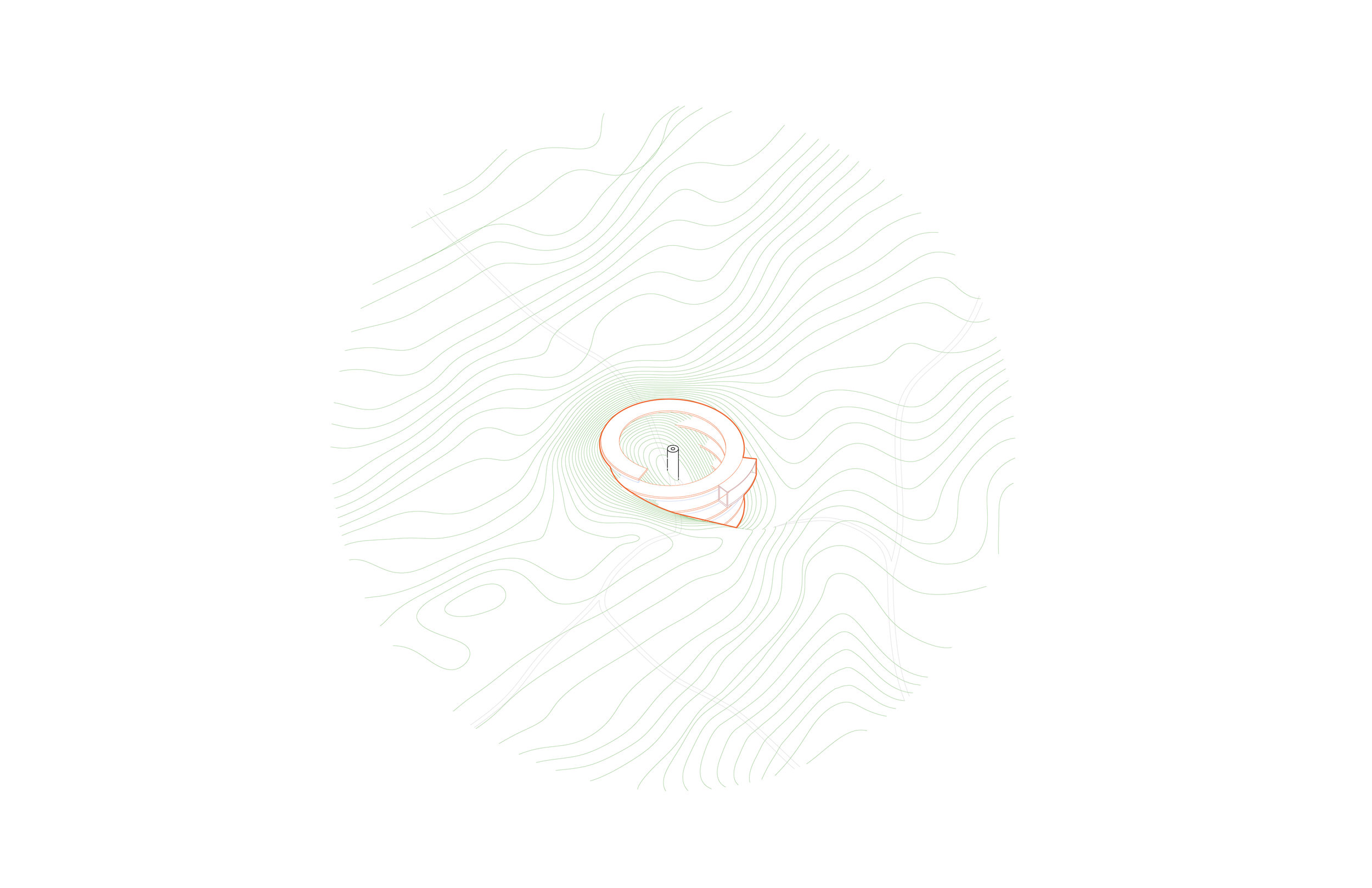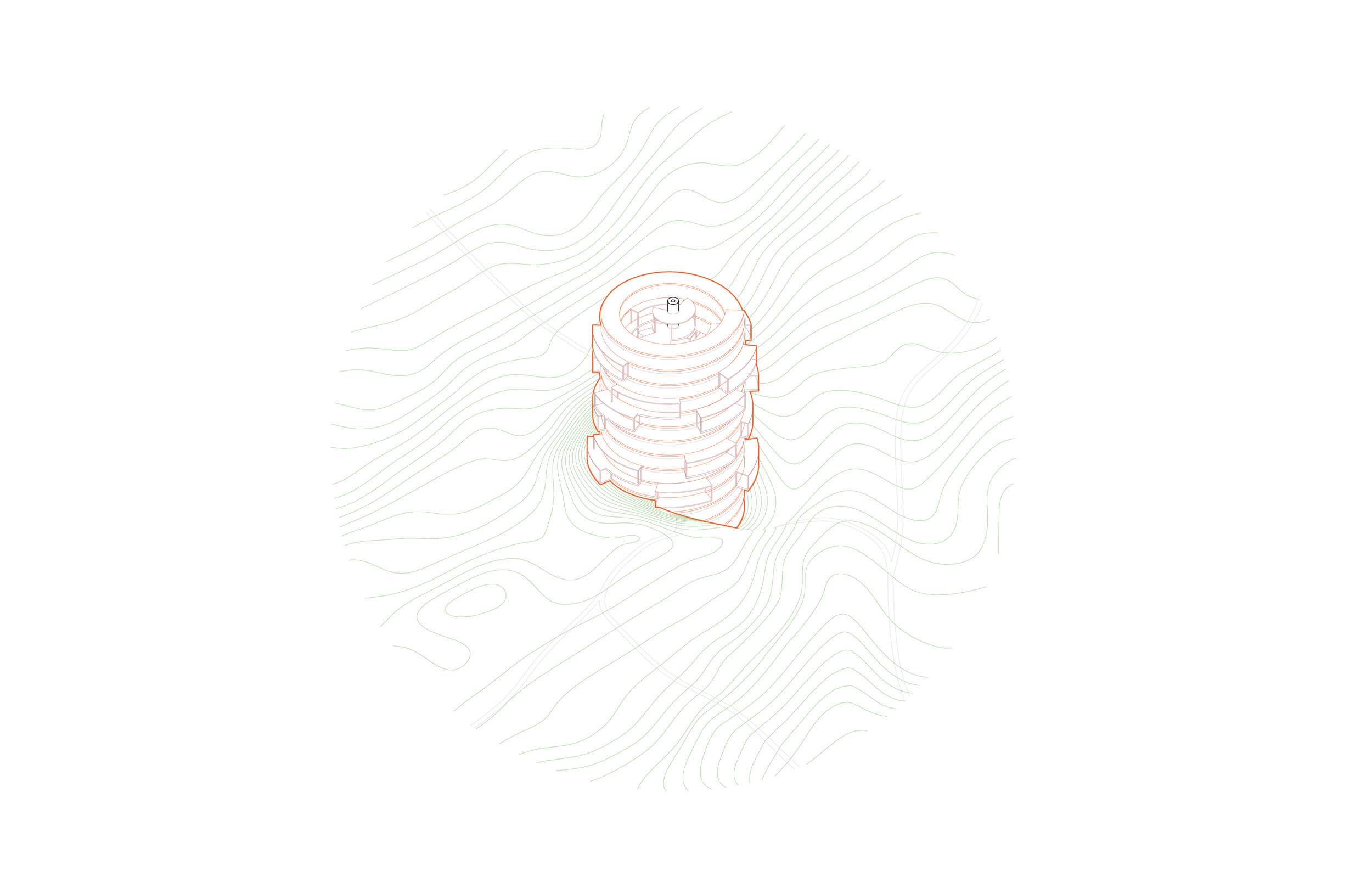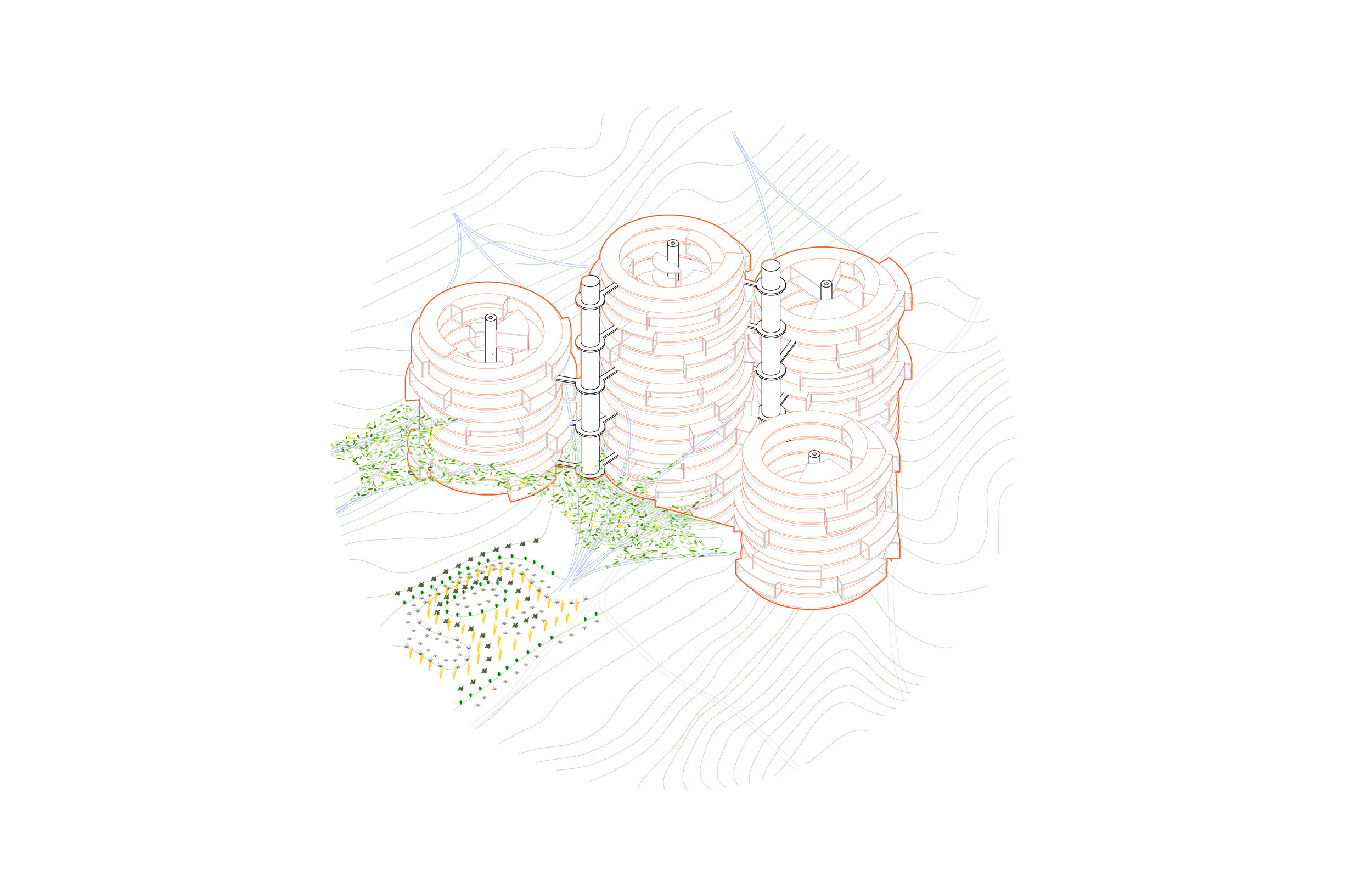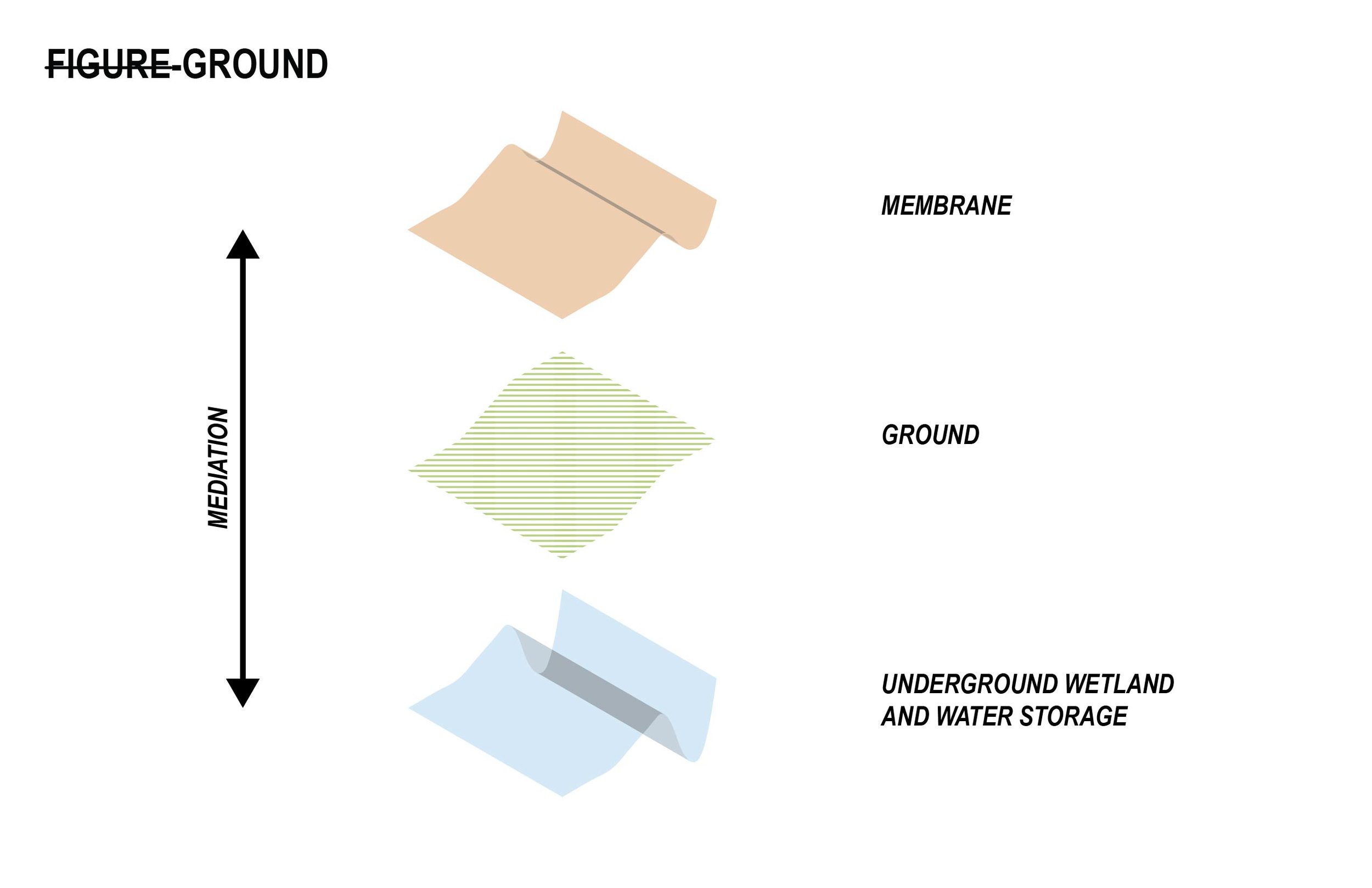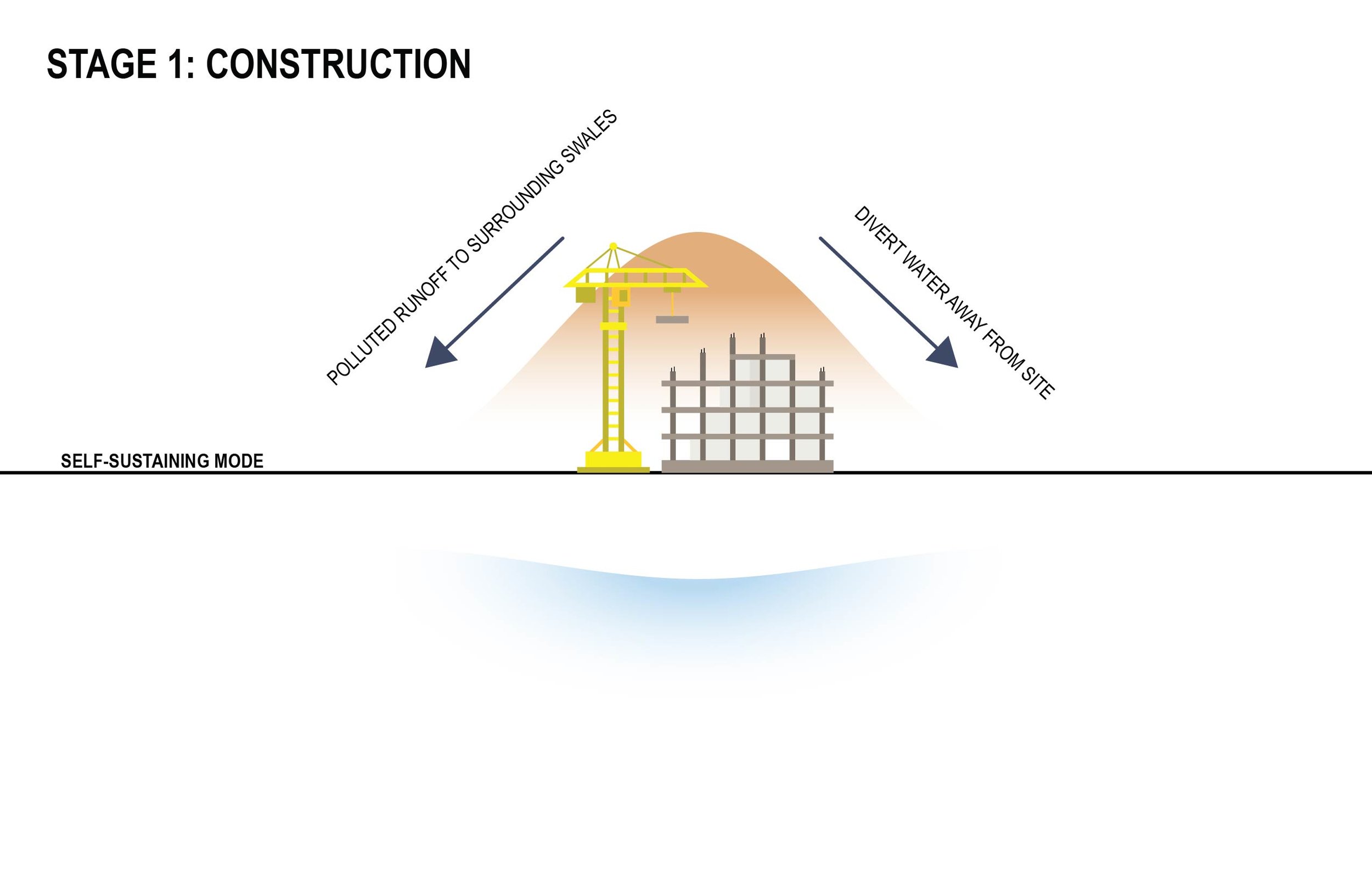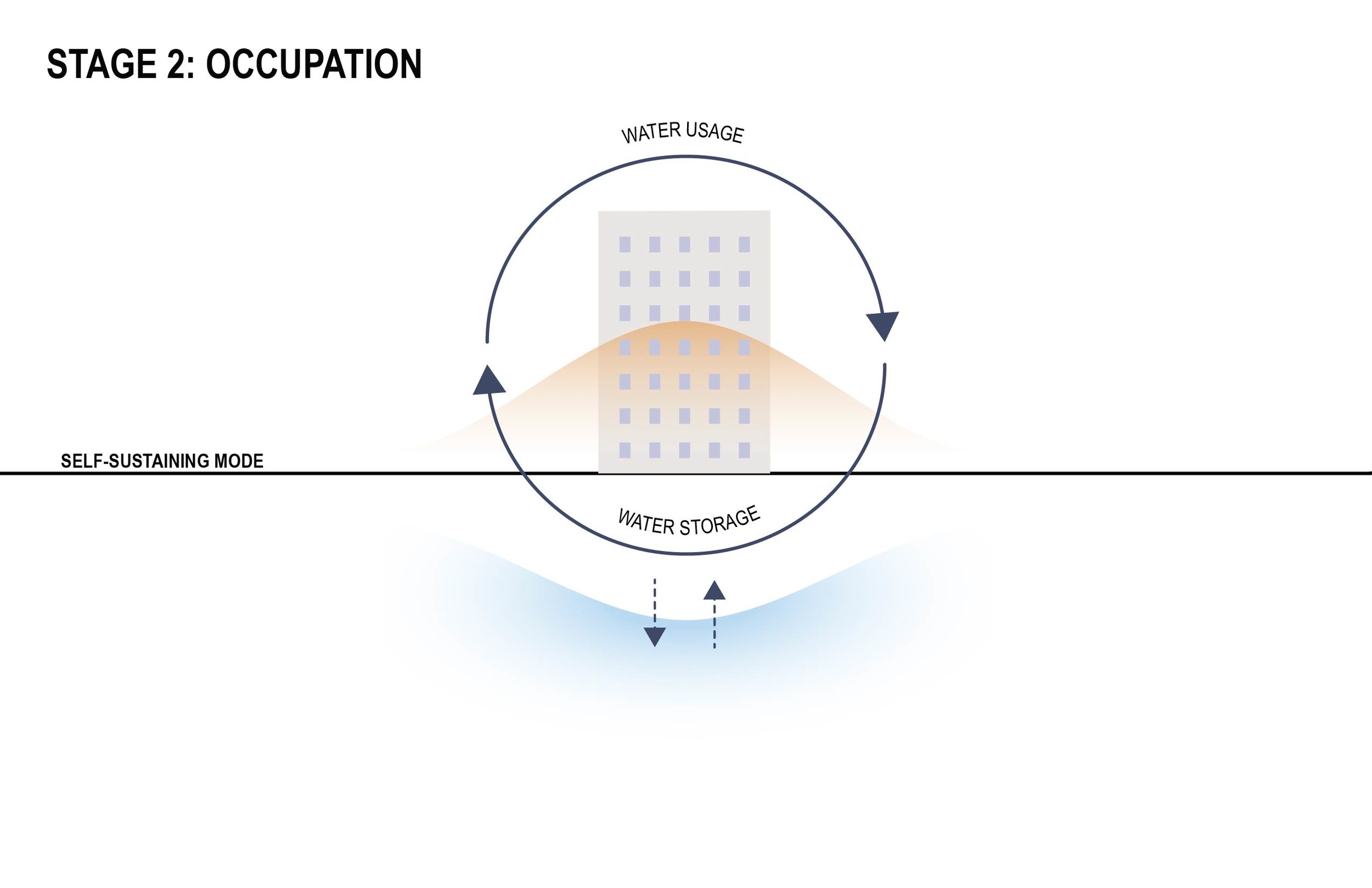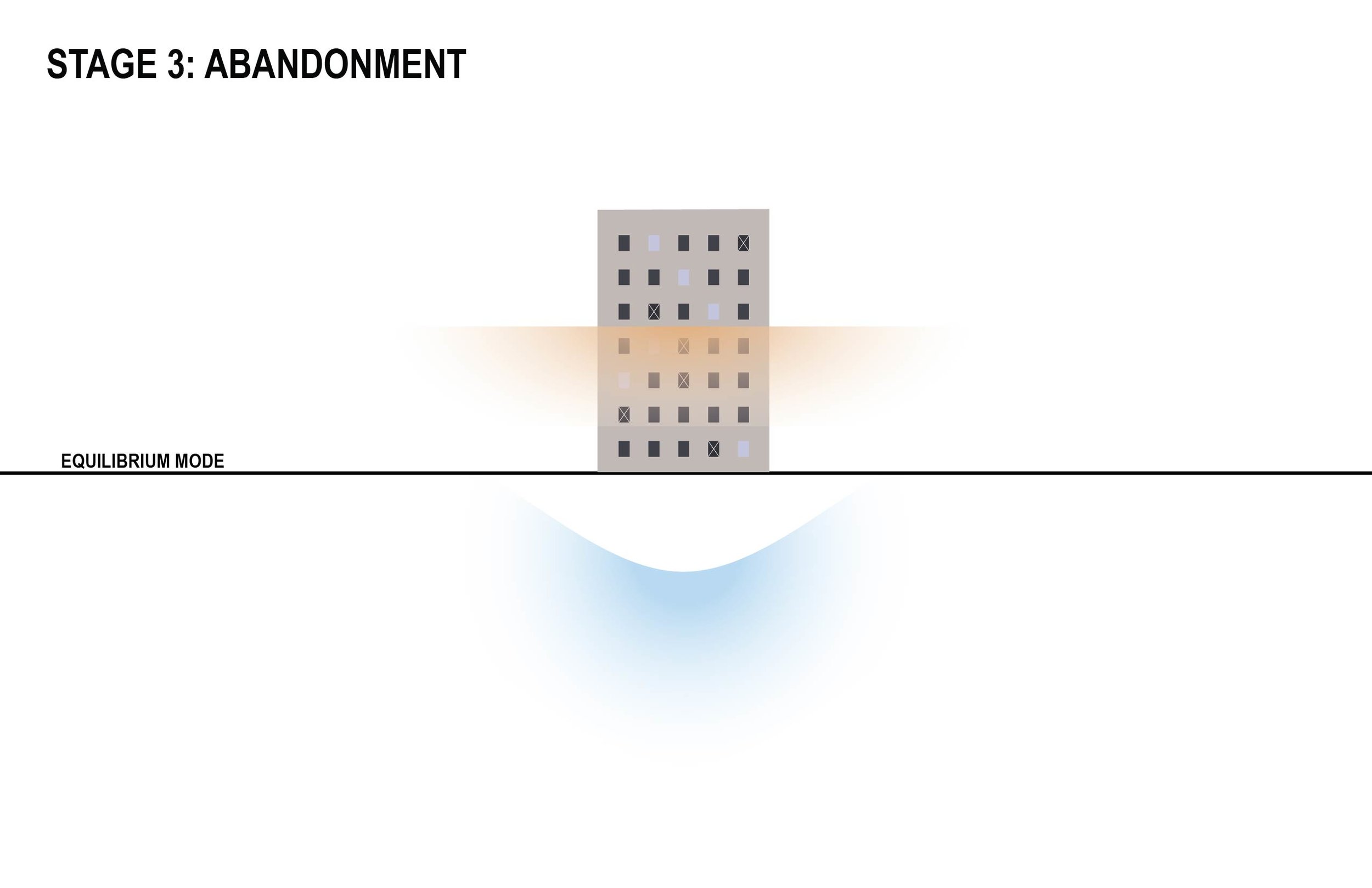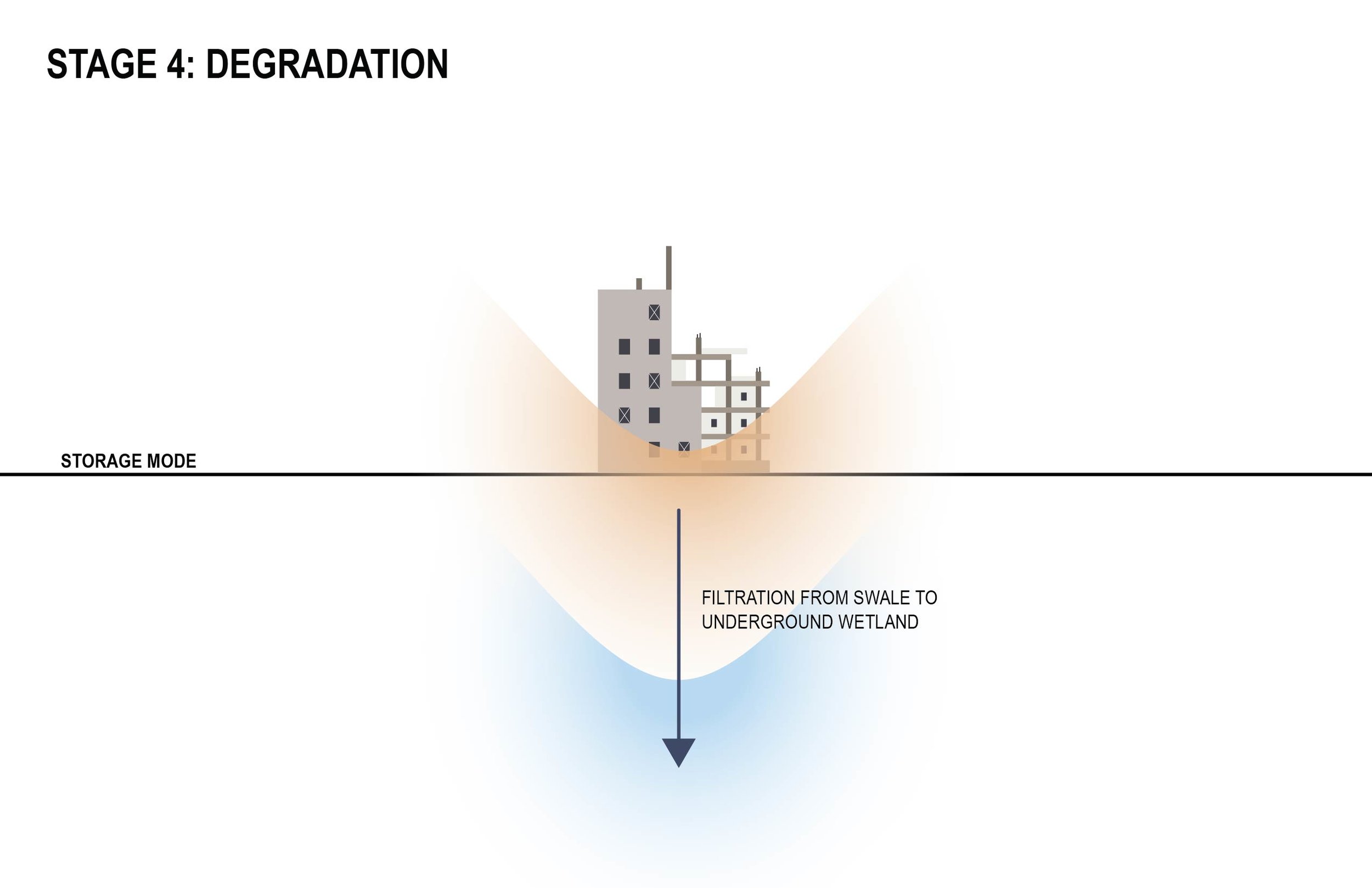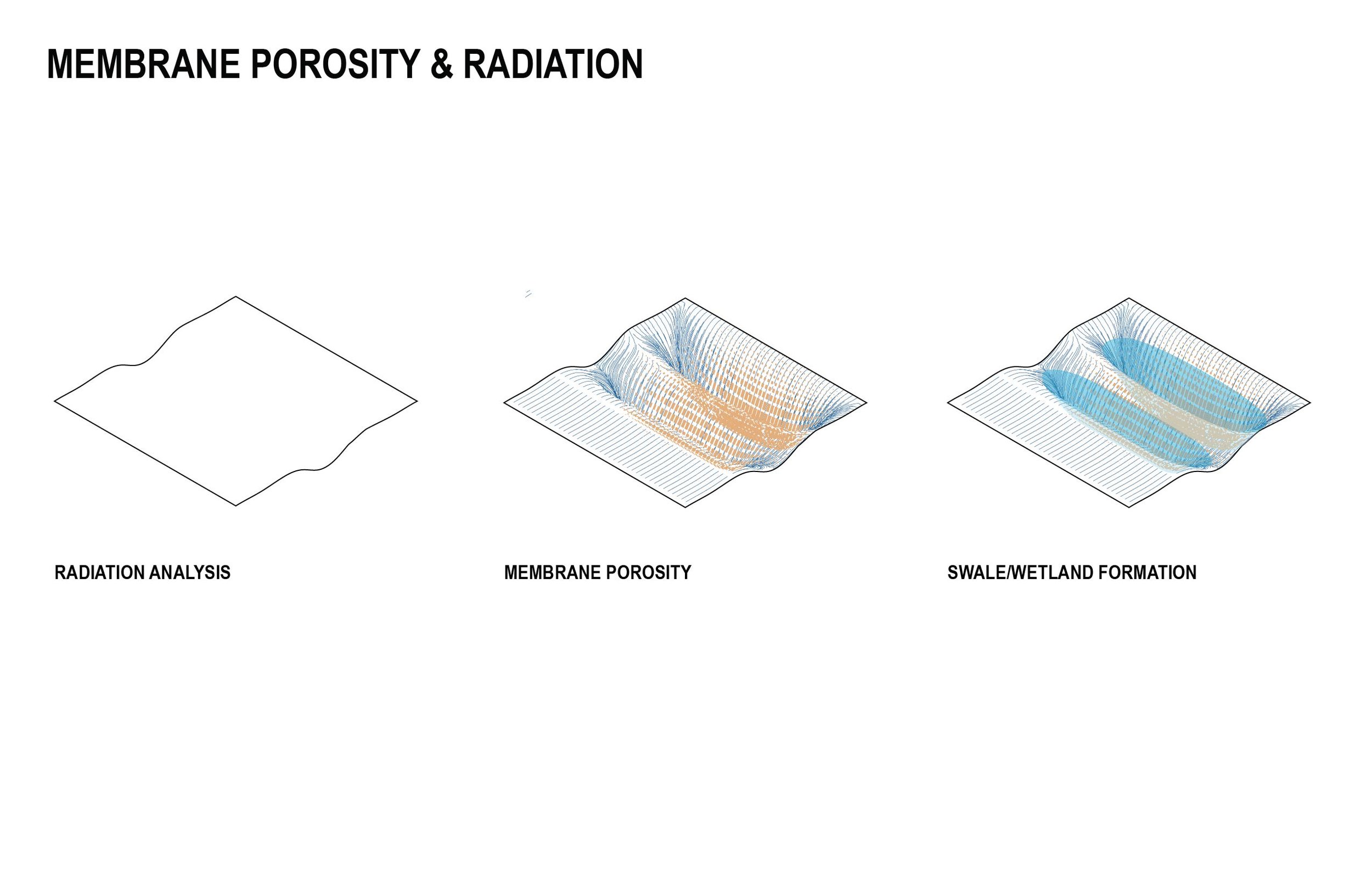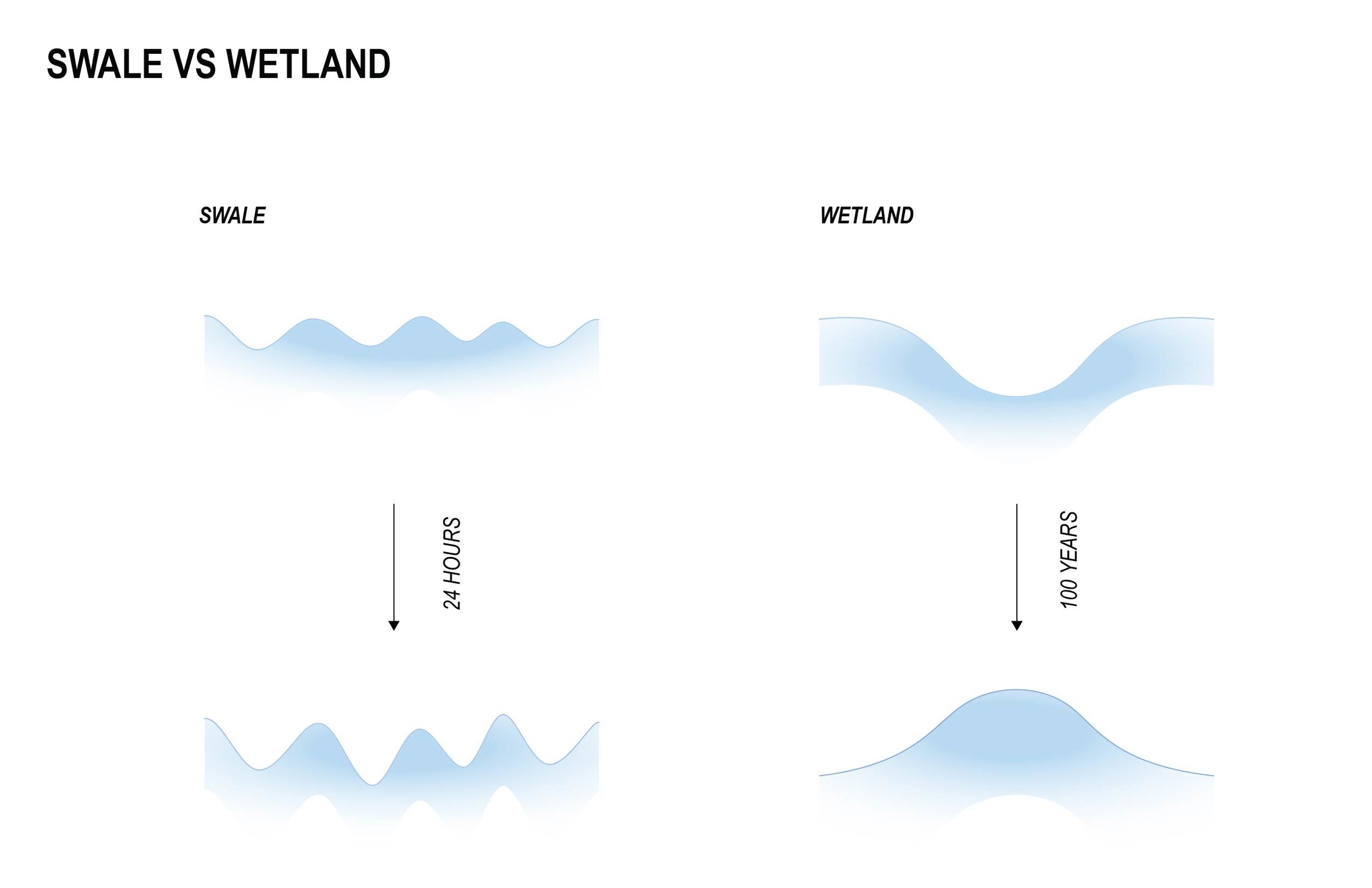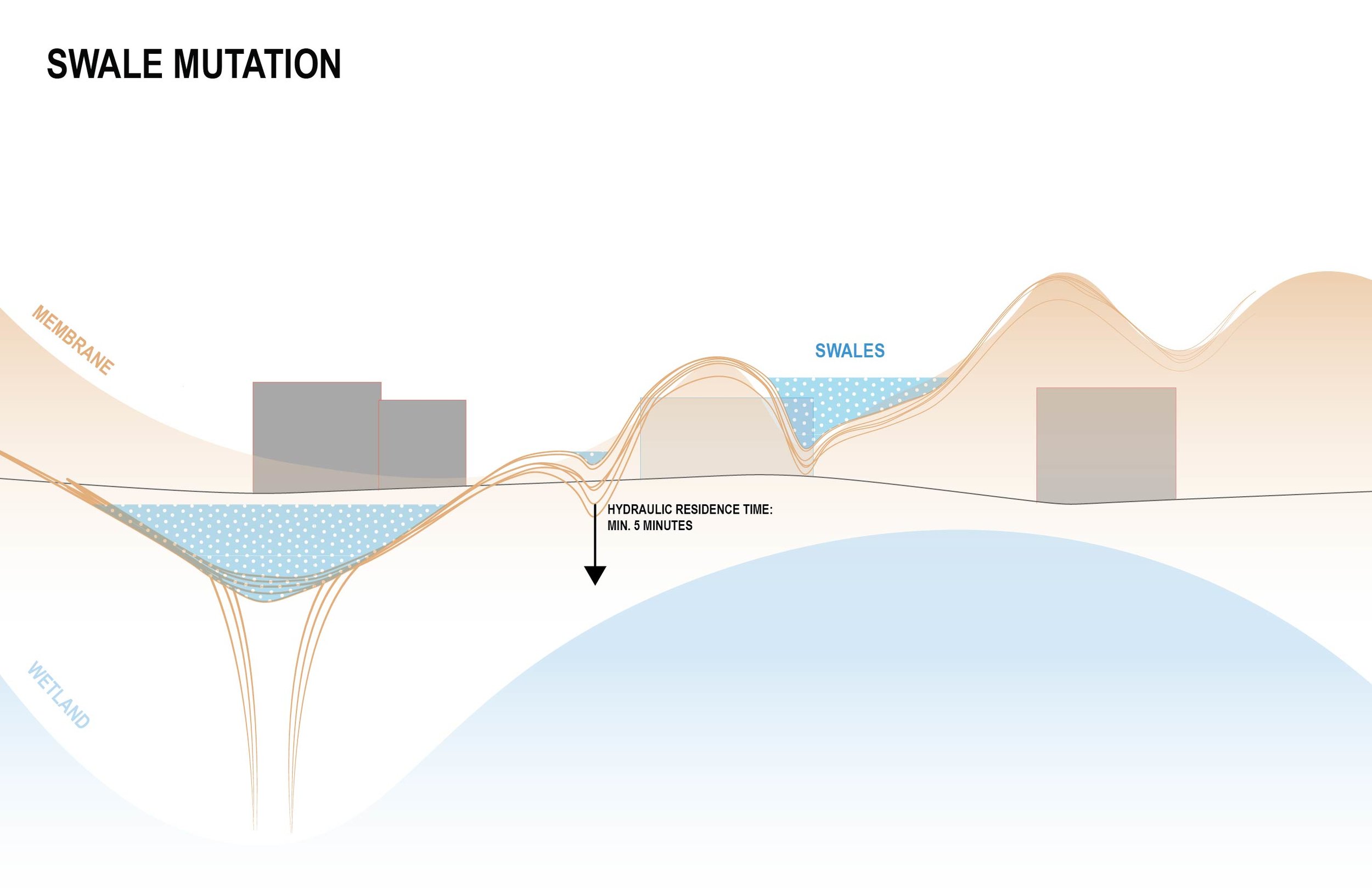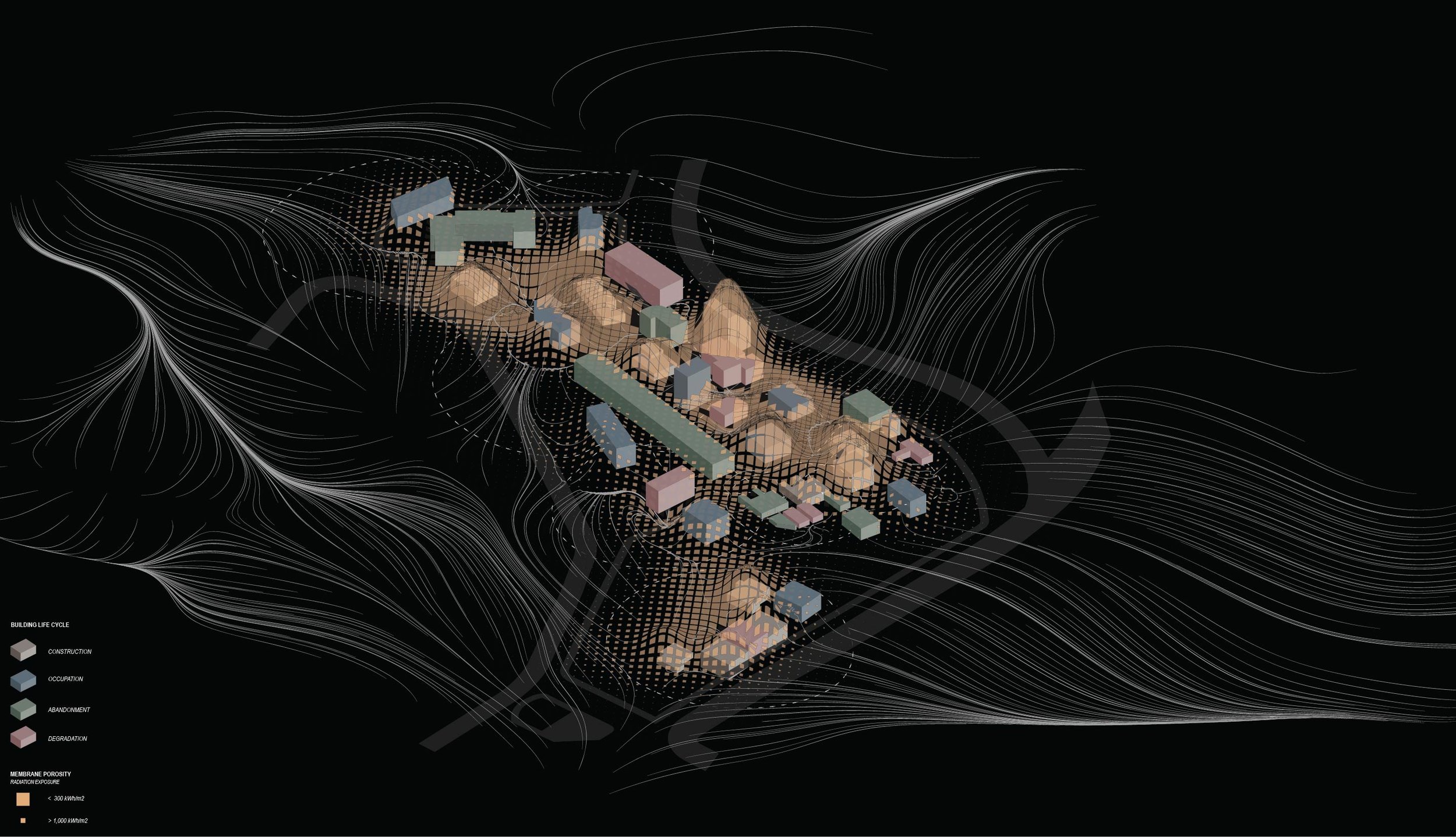Waterfront Place, Pittsburgh, PA
By the year 2100, global warming, increasing sea levels and lack of land resources has prompted a shift of inhabitation to the waterfront. Living with a constant state of flooding and inundation is a necessity as well as an opportunity to rethink the housing project, the return to the notion of the commons and the collective. As the city that remains on land becomes over-populated, segregated and too susceptible to the climatic fluctuations of the apocalyptic scenario, we propose a network of water settlements that is not tied to ownership of land, territory or rights, promoting the sharing movement of collectivity for new social and environmental engagements.
Imagining the event of a flooded Pittsburgh river edge, we extract from environmental data of the Strip District site and overlay the underground combined sewage network with layers of floodplain to identify convergences of stormwater overflow. Out of these pollution outflows develop networks of bioswales for water filtration. The filtered water is then extracted underground through these infrastructural coils that then gets developed into a collective housing scheme. They operate like a vertical street, allowing for room to plug in programs as needed.
Awarded Studio Design Commendation / In collaboration with Adam Kor
Professor Dana Cupkova with Eddy Man Kim, Gretchen Craig and Visiting Professor Marco Poletto
How can we build on a positive relationship with water?
Is the sharing movement the key to successful environmental engagements?
Along with the resettlement of population also comes the need for food and agriculture. As land gets inundated by flood water, real estate for farming is lifted above ground in a canopy network between the housing coils. Supported by the water pumped from underground, growing pipes sprawls out from various levels, connecting to higher grounds on the un-flooded land. While providing new territory for vegetation these pipes also serve to regenerate existing soil. The result is a constant fluctuation of ground between the softscape of the canopy and the hardscape of existing landform.
Throughout the semester we’ve been investigating bioswales and related landform typologies, looking at how various land conditions can start relating to each other and well as begin to inform the built environment. We began by playing with these hypothetical landscapes informed by water flow and polluted areas. This information can begin to inform acupuncture's and dictate the porosity and fluctuation of the landscape. We’ve also researched the conventional norms of rejected water and are interested in celebrating the collection of water as well as using filtration systems as an integrated part of the daily experience. Looking at environmental data of the site, we look at how contours and flow lines can start informing density and creating a larger networked system.
Semester Work
Analyzed the city using a bottom up approach trying to create a dialogue involving the environmental repercussions relating to different social and political aspects of Pittsburgh while tying it back to the history and future of the city.
We’re investigating an organism constantly in flux composed of the harnessing and storage of fresh water through the usage of swale and wetland membranes that challenge the notion of “ground”. No more is there a clear plane but a series of undulating surfaces. By analyzing the life cycle of buildings, we created a framework for the path water takes throughout the cycle with the aim of avoiding polluted areas and harnessing clean water. The cycle begins with construction of new infrastructure, water is diverted to avoid pollution. During occupation, the water is filtered within the structure, creating a self-sustaining system. The abandonment of structures places water at equilibrium, until the structures begin degradation, causing them to be converted into areas for water storage.
Exploring the notion of private vs. public water collection through scales of time and life cycles of the built environment. We looked at translating the life cycle of buildings into a modular living system. Looking at the conventional norms of rejecting water we became interested in celebrating the collection of water as well as using filtration systems as an integrated part of the daily experience. Accepting the flow of water throughout the structure allowed for a more individual take on water filtration, creating self sustaining individual units.


